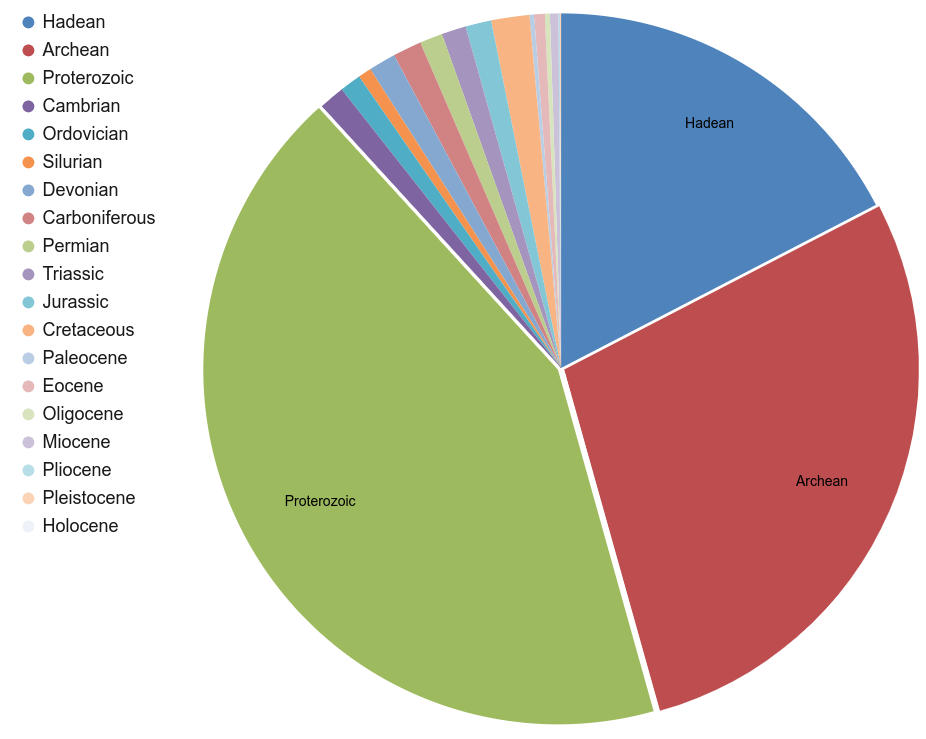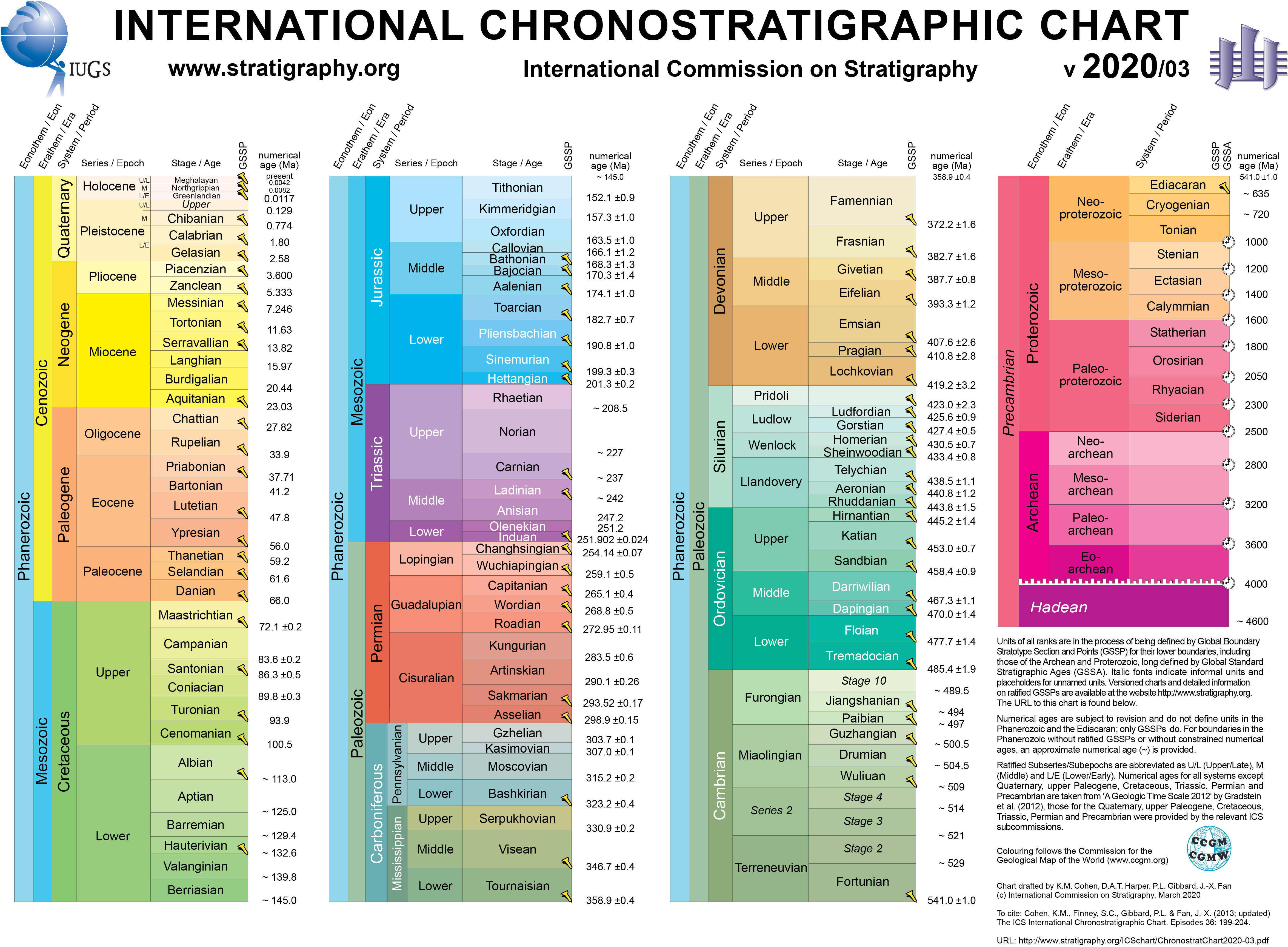Geological time is challenging to visualise.
You might say it is unimaginably vast. Here is a handy diagram showing major events that have occurred since the formation of the Earth. Take a moment to look at it and see if you can visualise what even a million years means.

Note: Ma = million years, Ga = billion years = 1000 million years.
Tricky, huh? If we think about this in terms of percentages, it becomes really clear that the earlier parts in earth history are vast, compared to the bits where, for example, animals have been around:
If you want to explore these relationships a little further, you can find a live version of this chart at this location.
An analogy
That still doesn't really help us get our heads around this, though, does it? Perhaps a better way of achieving this is to imagine the geological timescale as a 24 hour clock. If we do this, and map the geological column against our 24 hour clock, we find:
| Period |
Start
|
End
|
Major Events
|
| Hadean | 0:00:00 | 4:10:26 | Life may well have been around here, but we don't have definitive evidence this was the case (you can learn about timescales in Evolution & Palaeobiology - Evolutionary Milestones) |
| Archaean | 4:10:26 | 10:57:23 | Our earliest fossil evidence of life lies in this period, at around 5.45 |
| Proterozoic |
10:57:23
|
21:10:20
|
Complex cells - i.e. Eukaryotes - present by 16.00, multicellular life by 18.30 |
| Cambrian |
21:10:20
|
21:27:08
|
Extant phyla appear in the Cambrian explosion shortly after 21.10 |
| Ordovician |
21:27:08
|
21:41:06
|
The first complex ecosystems on land start to form by 21.41 |
| Silurian |
21:41:06
|
21:49:46
|
Fossil evidence of plants and animals on land appears |
| Devonian |
21:49:46
|
22:07:33
|
Vertebrates venture onto land; bony fish in the seas |
| Carboniferous |
22:07:33
|
22:26:24
|
Most of our coal dates from here |
| Permian |
22:26:24
|
22:41:26
|
Amniotes ( reptiles, birds, and mammals) successful |
| Triassic |
22:41:26
|
22:57:31
|
Dinosaurs appear |
| Jurassic |
10:57:31
|
23:14:27
|
Dinosaurs, dinosaurs, dinosaurs |
| Cretaceous |
23:14:27
|
23:39:30
|
BOOM no more dinosaurs at 23:40 |
| Paleocene |
23:39:30
|
23:42:28
|
Mammals start to dominate |
| Eocene |
23:42:28
|
23:49:23
|
Mammals successful, climate warm and wet |
| Oligocene |
23:49:23
|
23:52:48
|
Continents approach current positions |
| Miocene |
23:52:48
|
23:58:20
|
The first Hominids evolve |
| Pliocene |
23:58:20
|
23:59:11
|
Getting colder... |
| Pleistocene |
23:59:11
|
0:00:00
|
Ice ages! |
| Holocene |
0:00:00
|
0:00:00
|
Everyone you love, everyone you know, everyone you ever heard of, every human being who ever was, lived out their lives, in the last seconds before midnight
|
Want to learn more?
This video - from and copyright of - PBS Eons, covers much of the same ground as the above table. It gives a good overview of what happened when in relation to the geological timescale:


